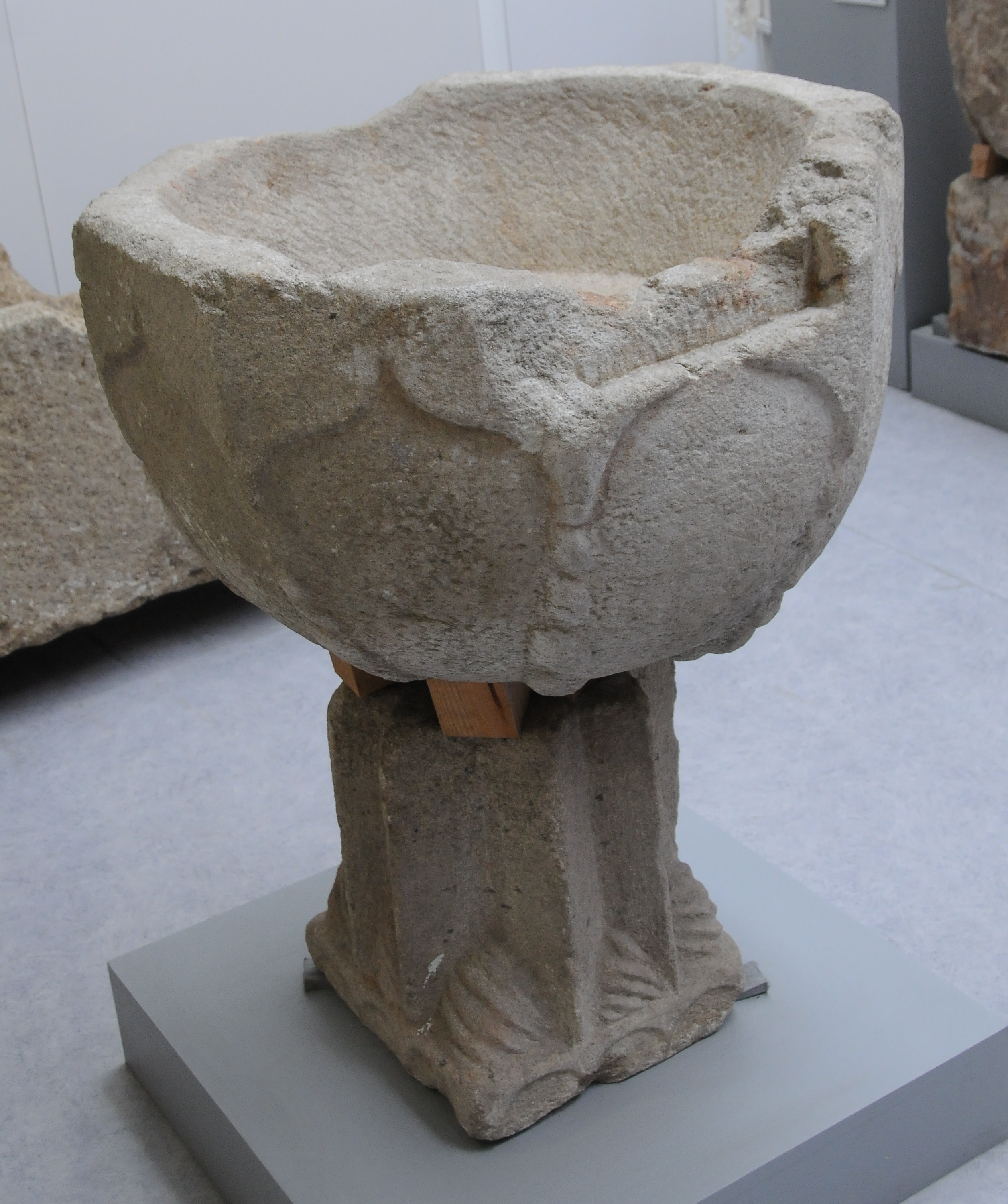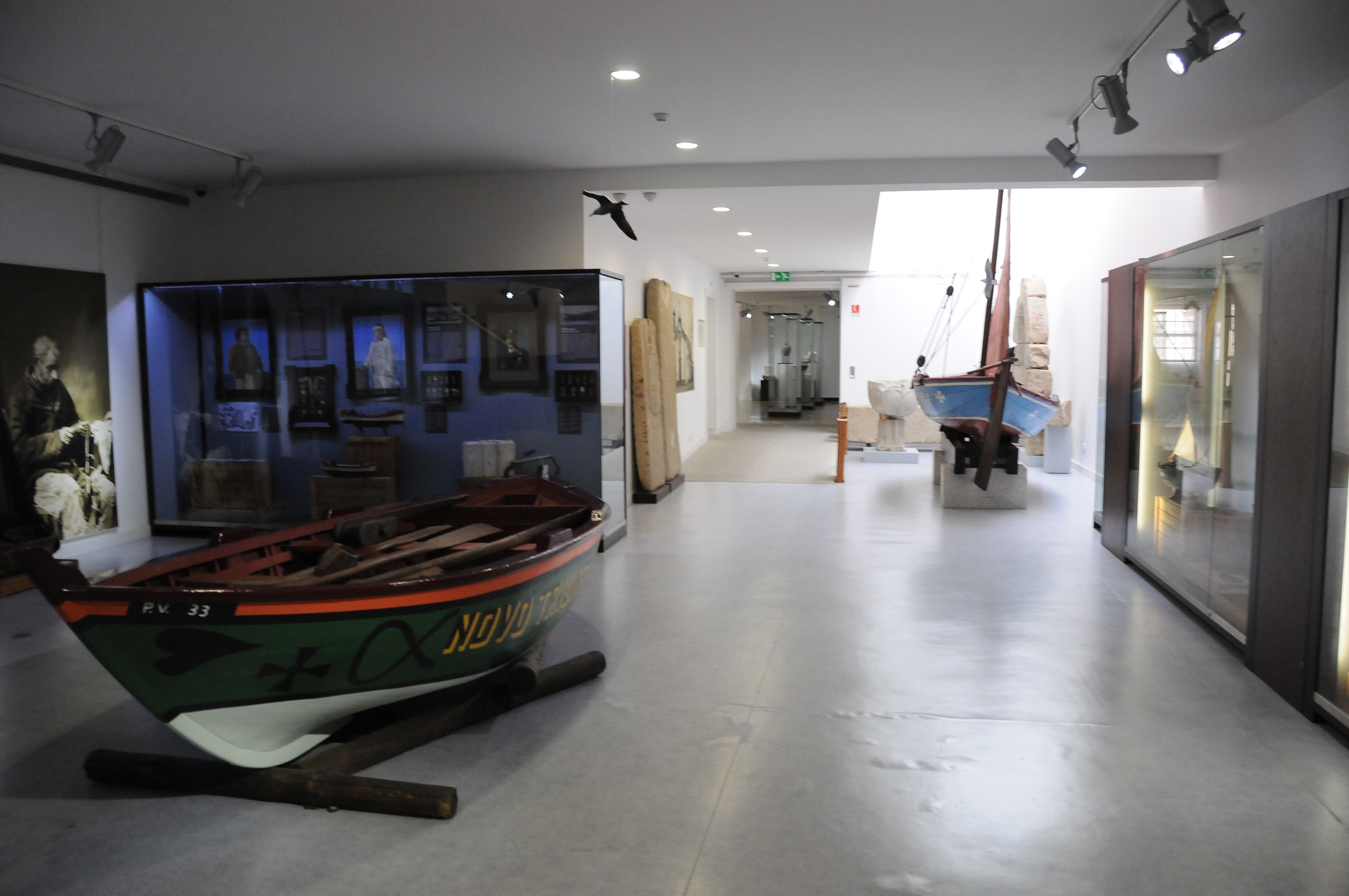Ethnography And History Museum Of Póvoa De Varzim on:
[Wikipedia]
[Google]
[Amazon]

 Ethnography and History Museum of Póvoa de Varzim (Portuguese: ''Museu Municipal de Etnografia e História da Póvoa de Varzim'') is a
Ethnography and History Museum of Póvoa de Varzim (Portuguese: ''Museu Municipal de Etnografia e História da Póvoa de Varzim'') is a
 The museum, was for the years to come, considered a role model regarding maritime ethnography with thousands of visitors, the life, arts and traditions of the Povoan fisher and farmer communities were the most popular amongst visitors. Dolls presenting traditional games and cultural aspects of the community were created by Mestre Quilores.
When Santos Graça died in 1956, the museum started to decline and, in 1974, the building was bought by Póvoa de Varzim Town Hall to João do Ameal, Count of Ameal. The building was closed for works, but its collection kept being shown across Portugal and Europe, such as "Siglas Poveiras", winner of a 1980 International European Museum of the Year award, "Povoan costumes", "Archeology in the Municipality of Póvoa de Varzim"; "António Santos Graça - The Man and his Work", "Fishery, Sea Baths, Countryside life - a view of the community in times of change".
The historical building was declared, by the Portuguese national monuments institute, as of public importance in 1985. The museum reopened on September 7, 1985, and used for several temporary exhibits featuring diverse aspects of local History and Ethnography. The old dolls with scenes of traditional Povoan lifestyle and the tradition kitchen were recovered due to visitors pressure, a part of the museum that became known as the "museum of the museum".
The Ethnography and History Museum organized the reconstruction of Lancha Poveira Fé em Deus, a Poveiro boat in 1991 and opened an archeology section, important for the study of archaeological findings, such as the Roman Villa Mendo, the early Medieval Rates township and monastery, the Roman necropolis at Beiriz, and Cividade de Terroso, an important
The museum, was for the years to come, considered a role model regarding maritime ethnography with thousands of visitors, the life, arts and traditions of the Povoan fisher and farmer communities were the most popular amongst visitors. Dolls presenting traditional games and cultural aspects of the community were created by Mestre Quilores.
When Santos Graça died in 1956, the museum started to decline and, in 1974, the building was bought by Póvoa de Varzim Town Hall to João do Ameal, Count of Ameal. The building was closed for works, but its collection kept being shown across Portugal and Europe, such as "Siglas Poveiras", winner of a 1980 International European Museum of the Year award, "Povoan costumes", "Archeology in the Municipality of Póvoa de Varzim"; "António Santos Graça - The Man and his Work", "Fishery, Sea Baths, Countryside life - a view of the community in times of change".
The historical building was declared, by the Portuguese national monuments institute, as of public importance in 1985. The museum reopened on September 7, 1985, and used for several temporary exhibits featuring diverse aspects of local History and Ethnography. The old dolls with scenes of traditional Povoan lifestyle and the tradition kitchen were recovered due to visitors pressure, a part of the museum that became known as the "museum of the museum".
The Ethnography and History Museum organized the reconstruction of Lancha Poveira Fé em Deus, a Poveiro boat in 1991 and opened an archeology section, important for the study of archaeological findings, such as the Roman Villa Mendo, the early Medieval Rates township and monastery, the Roman necropolis at Beiriz, and Cividade de Terroso, an important 
museum
A museum is an institution dedicated to displaying or Preservation (library and archive), preserving culturally or scientifically significant objects. Many museums have exhibitions of these objects on public display, and some have private colle ...
with a maritime and ethnic theme located in the Portuguese city of Póvoa de Varzim
Póvoa de Varzim () is a Portugal, Portuguese city in Norte Region, Portugal, Northern Portugal and sub-region of Greater Porto, from its city centre. It sits in a sandy coastal plain, a cuspate foreland, halfway between the Minho River, Minho ...
. The museum is located in Solar dos Carneiros, former home of the Viscount of Azevedo.
It is a 17th-century building, listed by IGESPAR as a property of public interest in Portugal. It became a museum in 1937 and is one of the oldest ethnographic museums in Portugal. The museum collection includes the permanent exhibition "Siglas Poveiras" that won the "European Museum of The Year Award" in 1980. It also includes Sacred art from the early main church, archaeological findings such as Roman inscriptions, Castro culture
Castro culture (, , , , meaning "culture of the hillforts") is the archaeological term for the material culture of the northwestern regions of the Iberian Peninsula (present-day northern and central Portugal together with the Spanish regions of ...
ceramics and other collections.
The museum has two extensions near historical sites: São Pedro de Rates Museum - for the history, legend and art surrounding the Romanesque Church of Rates and Cividade de Terroso Museum - a presentation with archaeological findings at the entrance of Cividade de Terroso, a Castro culture
Castro culture (, , , , meaning "culture of the hillforts") is the archaeological term for the material culture of the northwestern regions of the Iberian Peninsula (present-day northern and central Portugal together with the Spanish regions of ...
city.
History
António dos Santos Graça
António dos Santos Graça (1882—1956) was a Portuguese ethnologist, journalist and politician notable for the study and preservation of Poveiro culture, history, and folklore. He was born and also died at Póvoa de Varzim.
António dos Santos ...
, an ethnographer from the Povoan fisher community, published his work "O Poveiro" (The Povoan) in 1932. In the book, Santos Graça presented the cultural issues of the community in a clear, elaborated and attractive way, including important and curious aspects such as social structure, ancestry, and change. The First Regional Exhibition of Maritime Fishery of the Coast of Entre-Douro-e-Minho
Entre Douro e Minho () is one of the historical provinces of Portugal which encompassed the country's northern Atlantic seaboard between the Douro and Minho rivers. Contemporaries often referred to the province as simply "Minho". It was one of s ...
, held in Casino da Póvoa in October 1932, prompted the foundation of the museum by Santos Graça in 1937 in an attempt to preserve the practices and traditions of this community that were being rapidly lost without registration or academic studies.
Santos Graça rented the Solar dos Carneiros, a nobleman house, although he immediately saw that the building was not suited for the needs. The museum collection included objects from the museum created by António Augusto da Rocha Peixoto in 1907, the Archeology and History collection of Padre Brenha Museum (cataloged by Cândido Landolt in 1893); the Regional Museum of the local lyceum
The lyceum is a category of educational institution defined within the education system of many countries, mainly in Europe. The definition varies among countries; usually it is a type of secondary school. Basic science and some introduction to ...
; Roman inscriptions; artifacts saved between 1916 and 1918 when the first church of Póvoa de Varzim was demolished and objects offered by the Santa Casa da Misericórdia
Santa Casa da Misericórdia is a charitable institution whose mission is to treat and support the sick, the disabled, and orphans. Founded in Lisbon in 1498 by Queen Leonor of Portugal, the institution grew into a network of charitable organizat ...
.
Iron Age
The Iron Age () is the final epoch of the three historical Metal Ages, after the Chalcolithic and Bronze Age. It has also been considered as the final age of the three-age division starting with prehistory (before recorded history) and progre ...
settlement.
Permanent exhibitions
*Archeology nucleus: Roman andCastro culture
Castro culture (, , , , meaning "culture of the hillforts") is the archaeological term for the material culture of the northwestern regions of the Iberian Peninsula (present-day northern and central Portugal together with the Spanish regions of ...
artifacts;
*Kitchen: A real in-site ancient kitchen of a Povoan nobleman's house;
*Tragic Maritime History: Fisher community history;
*Chapel and ex-votos: Local religious art;
*Building a Lancha: Focusing on the ancient knowledge of Poveiro Boats;
*Rocha Peixoto, the Life and work of António Augusto da Rocha Peixoto;
*Traditional games, children's ancient games;
*Scenes of Povoan lifestyle, old dolls featuring traditional aspects of the local culture;
*Siglas Poveiras, On Siglas Poveiras
The (, ) or () are a proto-writing system used by the local community of Póvoa de Varzim, Portugal, for many generations.
The siglas poveiras were primarily used as signatures for family coat of arms to mark family belongings. The symbols w ...
script.
References
{{DEFAULTSORT:Ethnography And History Municipal Museum Of Povoa De Varzim Landmarks in Póvoa de Varzim Archaeological museums in Portugal History museums in Portugal Maritime museums in Portugal Museums in Póvoa de Varzim